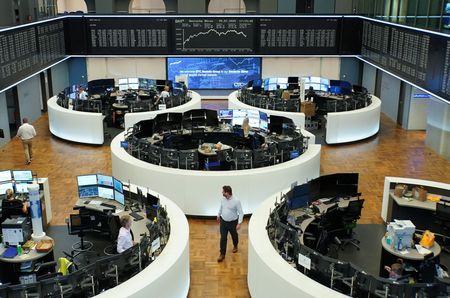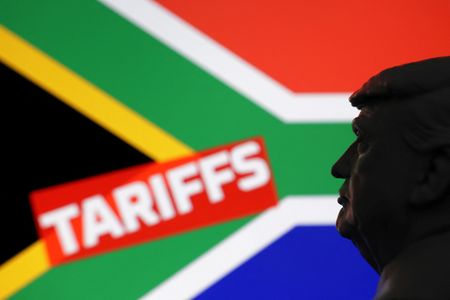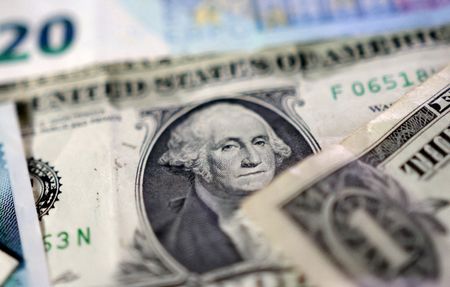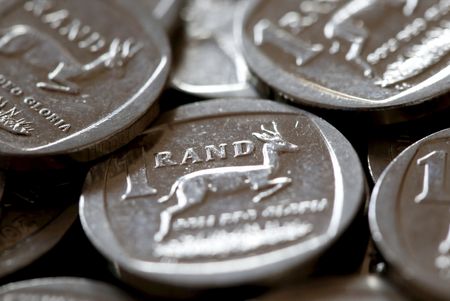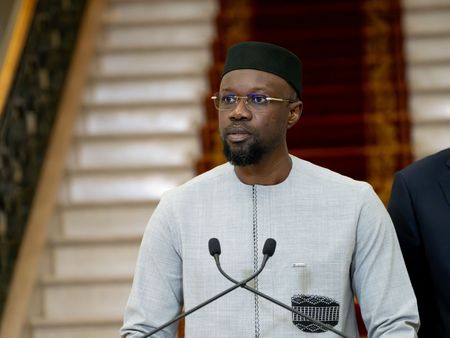By Florence Tan
SINGAPORE (Reuters) -Oil prices edged higher on Monday, paring earlier losses, as traders expect the market to absorb another large output hike by OPEC+ in September, while worries about disruptions to Russian oil shipments to major importer India also provided support.
Brent crude futures climbed 11 cents, or 0.16%, to $69.78 a barrel by 0647 GMT, and U.S. West Texas Intermediate crude was at $67.52 a barrel, up 19 cents, or 0.28%. Both contracts closed about $2 a barrel lower on Friday.
The Organization of the Petroleum Exporting Countries and their allies, known as OPEC+, agreed on Sunday to raise oil production by 547,000 barrels per day for September, the latest in a series of accelerated output hikes to regain market share. It cited a healthy economy and low stockpiles as reasons behind its decision.
The move, in line with market expectations, marks a full and early reversal of OPEC+’s largest tranche of output cuts, plus a separate increase in output for the United Arab Emirates, amounting to about 2.5 million bpd, or about 2.4% of world demand.
“This additional production appears to have little impact because it was so well flagged ahead of time,” said Michael McCarthy, chief executive officer of online trading platform Moomoo Australia.
It appeared that traders focused on the comments from state OPEC producers that previous additions were easily absorbed, particularly across Asia, he said.
Analysts at Goldman Sachs expect that the actual increase in supply from the eight OPEC+ countries that have raised output since March will be 1.7 million bpd, because other members of the group have cut output after previously overproducing.
Still, investors remain wary of further U.S. sanctions on Iran and Russia that could disrupt supplies. U.S. President Donald Trump has threatened to impose 100% secondary tariffs on Russian crude buyers as he seeks to pressure Moscow into halting its war in Ukraine.
At least two vessels loaded with Russian oil bound for refiners in India have diverted to other destinations following new U.S. sanctions, trade sources said on Friday and LSEG trade flows showed.
This puts about 1.7 million bpd of crude supply at risk if Indian refiners stop buying Russian oil, ING analysts led by Warren Patterson said in a note.
This would potentially erase the expected surplus through the fourth quarter and 2026 and provide OPEC+ the opportunity to start unwinding the next tranche of supply cuts totalling 1.66 million bpd, they added.
However, two Indian government sources told Reuters on Saturday the country will keep purchasing oil from Russia despite Trump’s threats.
Concerns about U.S. tariffs impacting global economic growth and fuel consumption are also hanging over the market, especially after U.S. economic data on jobs growth on Friday was below expectations.
U.S. Trade Representative Jamieson Greer said on Sunday that the tariffs imposed last week on scores of countries are likely to stay in place rather than be cut as part of continuing negotiations.
(Reporting by Florence Tan; Editing by Christian Schmollinger, Jamie Freed and Tom Hogue)


